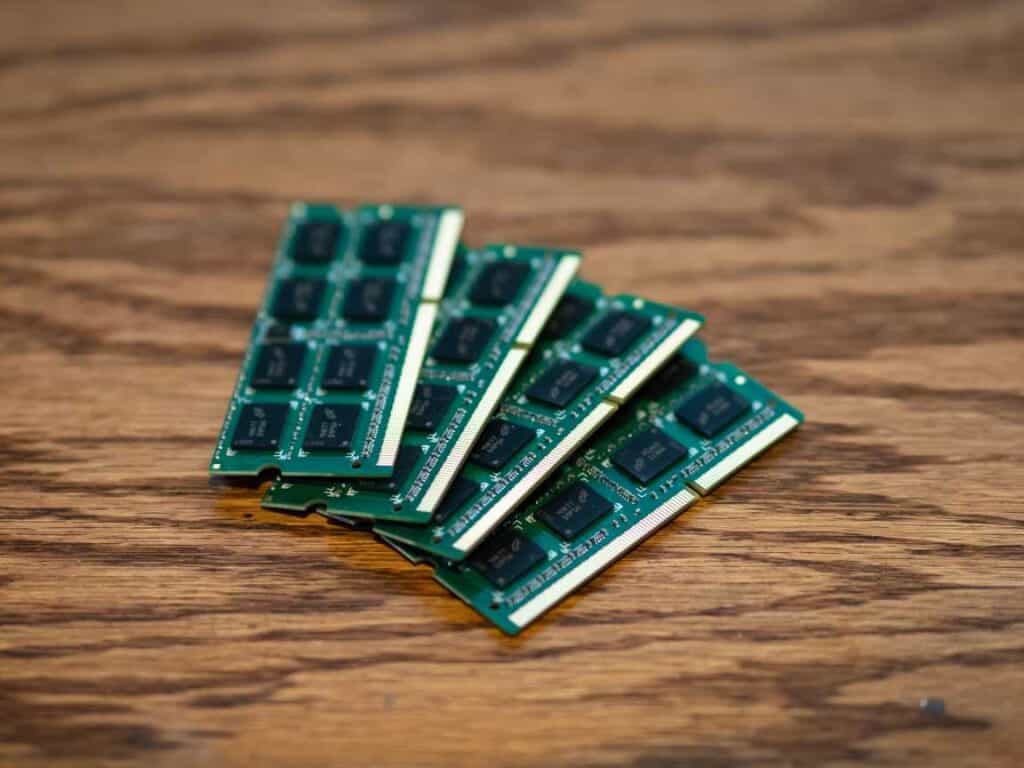Aura Sync is one of the most popular RGB lighting control software, therefore when I built my latest PC, I was really looking forward to using Asus Aura Sync to control all the RGB lighting. However, much to my disappointment, it wasn’t detecting any of the rams I had installed. Thankfully, after some digging around online I found a solution that worked for me.
Table of Contents
How to Fix Asus Aura Sync not Detecting Ram
So if you are also having issues with Asus Aura Sync not detecting ram? Don’t worry, you’re not alone! This can be a frustrating issue to fix, but we’re here to help. In this article, we will show you a few working methods on how to fix Asus Aura Sync not detecting Ram.
Check to see if your ram is compatible with Asus Aura Sync

One of the first things you should do if Asus Aura Sync is not detecting your ram, is to check and see if your ram is in fact compatible with the software. You can easily find this information by visiting the official Asus website or by checking the user manual that came with your motherboard.
If your ram is not compatible with Asus Aura Sync, then unfortunately there is not much you can do to fix the issue. In this case, you may want to consider purchasing a compatible ram or using a different RGB lighting control software. Below is the list of Best Compatible Rams for Asus Aura Sync-
- Corsair Dominator Platinum RGB 32 GB 3600 MHz
- G.Skill Trident Z Neo Series 32 GB 3600 MHz
- Corsair Vengeance RGB Pro 16 GB 3600 MHz
- Teamgroup T-Force Xtreem ARGB 16 GB 4000 MHz
- HyperX Fury 16 GB 3200 MHz
- Adata XPG Spectrix D80 16 GB 4133 MHz
- Crucial Ballistix MAX RGB 16 GB 4000 MHz
Make sure your Ram is installed properly
If your ram is compatible with Asus Aura Sync but the software still isn’t detecting it, then the next thing you should do is check to make sure your ram is installed properly.
To do this, you will need to open up your computer case and take a look at the ram modules. Make sure they are firmly inserted into the sockets and that there are no loose connections.
If everything looks good, then the next thing you should do is remove the ram modules and re-insert them. Make sure to line up the notch in the bottom of your RAM module with the raised ridge in your memory slot. Doing this will make it easier to insert your RAM into the correct orientation.
Use CPU-Z to check your ram’s frequency
If you’re still having issues, then the next thing you can try is using CPU-Z to check your ram’s frequency. CPU-Z is a free piece of software that gives you detailed information about your computer’s hardware.
To download CPU-Z, visit their website and scroll down to the “Downloads” section. Once there, select the download that is appropriate for your operating system and follow the instructions on the screen.
Once CPU-Z is installed, launch the program and go to the “Memory” tab. There, you will see detailed information about your ram, including its frequency. If your ram’s frequency is not being detected properly, then you may need to update your BIOS.
Update your BIOS to the latest version
If your ram is installed properly and you’re still having issues, then the next thing you should try is updating your BIOS to the latest version. This is often overlooked but can be a very effective solution. Updating your BIOS can be a bit tricky, so we recommend following the instructions that came for your motherboard.
To update your BIOS, you will need to enter the BIOS menu on your motherboard. This is usually done by pressing the DEL key during bootup. Once you’re in the BIOS menu, look for the option to update your BIOS and follow the instructions on the screen.
Once you have updated your BIOS, restart your computer and see if the issue is fixed. If not, then don’t worry! There are still a few other things you can try.
Disable “Aura Core” in the Asus Aura software
If you’re still having issues, then the next thing you can try is disabling “Aura Core” in the Asus Aura software. To do this, open up the Aura software and go to the settings menu. Once there, look for the option to disable “Aura Core” and make sure it is turned off.
This will disable some of the advanced features of Aura, but it will also make sure that all your RGB devices are properly detected. After disabling “Aura Core”, restart your computer and see if the issue is fixed.
Reboot your computer and try again
If you’ve tried all of the above and you’re still having issues, then the next thing you can try is rebooting your computer and trying again. Sometimes, Aura Sync can get stuck in a weird state where it doesn’t detect any RGB devices. Rebooting your computer will reset the software and hopefully fix the issue.
If you’re still having issues after rebooting, then the next thing you can try is uninstalling and reinstalling the Aura Sync software. This will remove any corrupted files that may be causing the issue.
Disable Secure Boot in the bios
If your Asus Aura Sync isn’t detecting your ram, the next thing you should check is whether or not a secure boot is enabled in your bios. Secure Boot is a security feature that can prevent malicious code from running at boot time, but it can also cause problems with some devices, including ram.
To disable secure boot, enter your bios and look for the secure boot option. Once you’ve found it, disable it and save your changes.
Disable XMP profile and enable manual overclocking
Another potential fix for Asus Aura Sync not detecting ram is to disable the XMP profile and enable manual overclocking. The XMP profile is a preset overclocking profile that can sometimes cause compatibility issues with certain devices.
To disable the XMP profile, enter your bios and look for the XMP option. Once you’ve found it, disable it and then enable manual overclocking. You may need to increase the voltage to your ram if you experience stability issues.
Increase voltage to the ram if needed
Asus Aura Sync not detecting your ram, you may need to increase the voltage to your ram. This is usually only necessary if you’re using high-performance ram, but it’s worth a try if you’ve tried all of the other potential fixes.
To increase the voltage to your ram, enter your bios and look for the voltage option. Once you’ve found it, increase the voltage to the recommended level and save your changes.
Uninstall and reinstall the Aura Sync software
If your Asus Aura Sync software is still not detecting your RAM, you may need to uninstall and reinstall the software.
You can try is uninstalling and reinstalling the Aura Sync software. To do this, go to the “Add or remove programs” menu in Windows and look for the Aura Sync software. Once you’ve found it, select it and click “Uninstall”.
After uninstalling the software, restart your computer and then visit the Asus website to download and install the latest version of Aura Sync. Once you’ve installed the software, see if the issue is fixed.
FAQs
1. What is the XMP profile?
The XMP profile is a preset overclocking profile that can sometimes cause compatibility issues with certain devices.
2. What is a secure boot?
Secure Boot is a security feature that can prevent malicious code from running at boot time, but it can also cause problems with some devices, including ram.
3. What is the recommended voltage for my ram?
The recommended voltage for your ram depends on the make and model of your ram.
4. How do I enter my bios?
To enter your bios, you will need to restart your computer and press a certain key when the boot screen appears. The key varies depending on your computer’s make and model, but it is usually F2, F12, or Esc.
Conclusion
So, there you have it! These are a few potential fixes for Asus Aura Sync not detecting ram. If you like this article, please share it with your friends and family. If you have any questions or comments, please leave them below. Thanks for reading!
